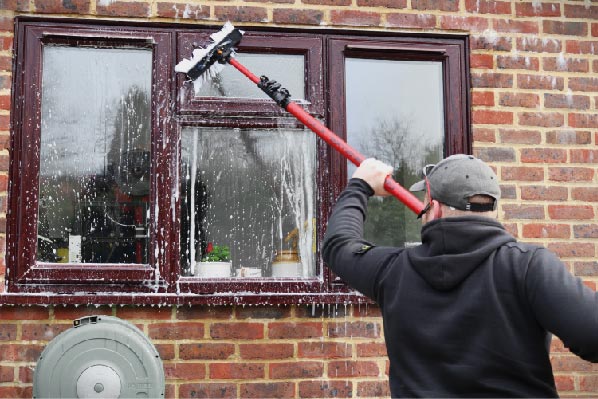Emerging technologies: Drones and Robots in Window Cleaning
From the 1930’s when Ettore Steccone challenged J Racenstein that he could convince all of Mr Racenstien’s customers to want an Ettore squeegee, through to Tucker launching its first aluminum water fed pole in the 1950’s and on to Water Fed Pole systems of the late 1990’s leading to V16 Pump controllers, window cleaning technology continues to evolve!
The window cleaning industry has seen constant evolution and improvements and WFP Systems bring greater efficiency and safety to the market. Modern Insulated Carbon Fibre Water-fed poles allow safe working.
So what might the future hold?
One developing product is drone technology. While there are some challenges such as battery life, restricted airspace and the need for operators to have relevant qualifications they are an interesting development.
Drones are making waves in the window cleaning industry, especially for high-rise buildings. Equipped with cameras and cleaning systems, drones can easily reach and clean areas that are difficult or dangerous for people to access.
Another technology development is robotic window cleaners which also offer an alternative method in cleaning high rise buildings. These devices reduce the need for people to abseil down buildings to clean surfaces and are able to clean autonomously. Commercial machines are able to use existing anchor points on buildings and are controlled from ground level.
There is also a smaller range aimed at domestic householders. Currently these machines are able to clean small areas effectively. They can be a little slow compared to a skilled professional window cleaner using Water Fed pole methods.
We already see some robots in the commercial cleaning sectors and maybe this will be taken up more widely by tomorrow’s professionals.
Drones and Robots may offer
Safety: Both reduce the need for workers to operate at dangerous heights, minimizing the risk of accidents.
Efficiency: These technologies may in the future be able to clean large areas quickly and effectively, saving time and labour costs.
Cost-Effective: Over time, investing in these technologies may lead to significant savings in labour and maintenance costs.
Conclusion:
In the future, as battery technology improves and regulation catches up, the adoption of drones and robots in the window cleaning industry may represent a significant technological leap. As these technologies evolve, they promise to make window cleaning safer, more efficient, and more cost-effective, ultimately benefiting businesses and workers alike.
Stay tuned to our blog for more insights into the latest trends and technologies in the window cleaning industry.
Archives
- June 2025
- March 2025
- November 2024
- October 2024
- September 2024
- July 2024
- June 2024
- April 2024
- September 2018
- April 2018
- May 2017
- April 2017
- December 2016
- December 2015
- February 2015
- October 2014
- August 2014
- June 2014
- May 2014
- April 2014
- January 2014
- October 2013
- March 2013
- November 2011
- October 2011
